One of the most common batteries for portable electronic devices is AA-size batteries, popularly called finger batteries.
The principle of operation of such batteries is based on the galvanic effect arising from the interaction of two electrodes (from metal or metal oxide) in the electrolyte.
Content
Types and characteristics of AA batteries
AA AA batteries are disposable galvanic power supplies and are hermetically sealed metal cylindrical containers containing electrolyte that impregnates the active material of the separator inside the housing and electrodes: cathode (minus) and anode (plus).
Such batteries are cylindrical in size from 13.5 to 14.5 mm in diameter and 50.5 mm in length. They provide a constant voltage of 1.2 - 1.5 volts.
The terminals of the electrodes are located at the ends of the housing and, as a rule, have the following dimensions:
- positive conclusion: diameter - 5.5 mm, height - about 1 mm;
- negative contact - a flat platform on the opposite end of the case with a diameter of more than 7 mm from the positive output.
Previously, the negative terminal was structurally integral with the case, which could cause a short circuit in the electrical appliance, and also caused increased corrosion of such batteries. In modern batteries, the housing is electrically isolated from the contacts, which increases the overall level of protection against corrosion and short circuits.
The weight of a AA AA battery, based on the density of the materials contained in the case, is from 14 to 30 grams.
Depending on the active substance used in the electrolyte and the cathode metal, there are such AA size galvanic cells:
- saline;
- alkaline (alkaline);
- lithium.
In order not to be mistaken in choosing the right element, you need to understand the differences between different types of batteries and how this difference affects the features of operation.
| Type of | Marking | Standard | Capacity | Voltage |
|---|---|---|---|---|
| Saline | R6 | 15D | 550-1500 | 1.5 v |
| Alkaline | Lr6 | 15A | 2700-3000 | 1.5 v |
| Lithium | FR6 | 15LF | 3000-3500 | 1.5 v |
Marking on the case allows you to understand the features of a particular battery by decoding it. The name of the manufacturer's company, its voltage (usually 1.5 v), designation of size AA, marking, an indication that it cannot be charged (Do not recharge!) And other features are usually applied to the battery case.
According to various standards, other designations can be found, except for AA, for batteries of this standard size.
According to IEC standards, AA elements have the following markings:
- R6 - salt power supplies capacity from 550 to 1500 milliampere-hours;
- Lr6 - alkaline power supplies with capacities from 2700 to 3000 milliampere-hours;
- FR6 - lithium power supplies with capacities from 3,000 to 3,500 milliampere-hours.
In accordance with the marking in many post-Soviet states, AA batteries having a salt or alkaline electrolyte are marked with a code 316 or A316 for improved cells.
In addition, the markings Mignon, Stilo, MN1500, MX1500 and others are used to designate the AA format.
AA salt batteries
These cells have an electrolyte of ammonium chloride, in which electrodes of zinc and manganese oxide are placed.

Such power sources are the cheapest, and they have several disadvantages:
- when discharging, the voltage decreases, at high load currents (more than 100 milliamps) they stop working;
- they have a very short shelf life - up to two years;
- a high level of self-discharge, leading to the fact that over time the capacity of such batteries decreases, falling to 60-70% by the end of the warranty period of storage;
- with decreasing temperature, the capacity of salt batteries decreases, dropping to zero.
The advantage of such finger batteries is their self-healing in the absence of load due to the restoration of the uniformity of the electrolyte composite, which is disrupted by the discharge during battery operation.
Attention! Due to the low operating current, they can be consumed only in low-power devices, such as watches, devices with LCD indicators, control panels and others that have low current consumption.
Alkaline (alkaline) AA batteries
Such power supplies began to be mass-produced in 1964, although they were invented at the end of the nineteenth century. Structurally, they consist of electrodes made of zinc (anode) and manganese dioxide (cathode), with an electrolyte from potassium hydroxide or other alkali.

Alkaline batteries are the most common due to the presence of a number of advantages:
- longer and longer life compared to salt sources;
- significantly better performance at low temperatures;
- reduction in the probability of leakage due to better tightness of the housing;
- low self-discharge and increased warranty period of storage in comparison with salt elements.
Alkaline batteries have a number of disadvantages:
- when such batteries are discharged, their voltage decreases;
- high cost in comparison with salt elements;
- a large mass of alkaline elements compared with salt elements.
Finger-type alkaline batteries are excellent for powering equipment that consumes no more than 250 milliamps, they discharge quickly with a higher current, so you should not use them in cameras and camcorders that consume a lot of current when using the backlight / flash.
AA lithium batteries
Lithium power supplies have a cathode (minus) made of lithium and an organic electrolyte impregnating the diaphragm separated from the cathode by a separator.
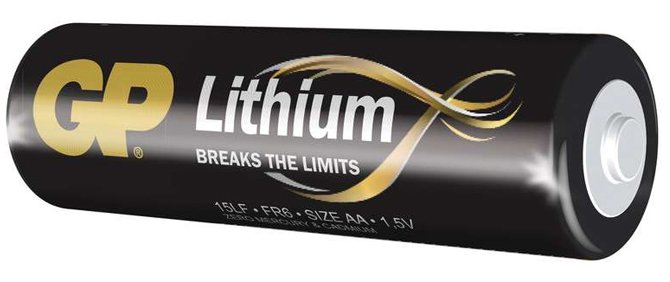
Lithium cells have the best characteristics at the highest cost, which is more than the price of salt and alkaline cells. They have the following advantages:
- greater capacity than alkaline batteries 1.5-3 times and up to 30 times higher than saline batteries;
- low self-discharge and long warranty shelf life (up to 12 years);
- maintaining operability in a wide temperature range from -40 ° C to + 60 ° C;
- reduced weight;
- maintaining a constant voltage with a wide range of load currents.
Lithium cells work perfectly on any equipment with any currents and keep working in cold weather. They are best suited for camcorders and cameras with high current consumption.
Attention! Currently, lithium-ion batteries are produced with sizes similar to AA standard (standard 14500), providing a nominal voltage of 3.7 volts. Their use instead of AA batteries is unacceptable, due to the significantly higher voltage that they give out.
There is a limited possibility of using such batteries paired with a dummy emulator, which will provide an excess voltage of 0.7 volts (a pair of AA AA batteries gives 3 volts, and one 14500 cell paired with a dummy will give up to 3.7 volts). 14500 element kits with emulators can be purchased in Chinese online stores.
How AA batteries differ from AAA
AAA power sources are smaller than AA, which is why they are colloquially called pinky ones. Their diameter is approximately 10.5 mm and a length of 44.6 mm.
Due to their larger size, AA finger cells have an increased capacitance at approximately the same voltage as AAA sources of the same type.
Can I charge AA batteries
Any batteries, unlike batteries, cannot be charged due to the fact that their design does not provide for such a possibility.
Important! If you try to charge the battery, it may overheat and explode, causing very unpleasant consequences. In addition, such a battery, even if it does not explode, will subsequently flow.
Because of this, depending on which electrolyte is in it and how much it will drain, serious consequences can be caused, both for the equipment in which they are installed and for health.
If rechargeable power supplies are required, batteries must be used.
Where are AA power supplies used?
AA-type finger-type batteries are widely used as power sources in various portable equipment, for example, cameras, players, radios, electrical appliances, flashlights, radio-controlled models, watches, laser pointers and many other cases.
When choosing batteries, you should pay attention to the current consumption of the equipment. For example, for cameras that use an energy-intensive flash, it is better to choose more powerful lithium cells, and for watches that do not need high amperage, you can put alkaline batteries.
Popular manufacturers and their features
High quality AA power supplies are available from manufacturers such as Energizer, Varta, Panasonic, Robiton, Ansmann, GP, Duracell, Minamoto, Canyon.
Middle-quality products are produced by manufacturers such as Photon, Cosmos, Sony, Hi-Watt, Lexman, Samsung.
Products manufactured by little-known manufacturers, such as salt batteries from Eastpower, Flash, Navigator and others, have a rather low quality.
Due to the characteristics of alkaline batteries, the variation in their parameters among different manufacturers is not so great, so when choosing them, the name of the manufacturer’s brand is not so important.
Based on the low capacity and the presence of many shortcomings, you should not buy salt batteries, which have very low power and the worst price-quality ratio. Due to their poor quality, they are not even produced by serious companies, for example, Duracell.
Still have questions about AA battery or have something to add? Then write to us about it in the comments, this will make the material more complete and accurate.

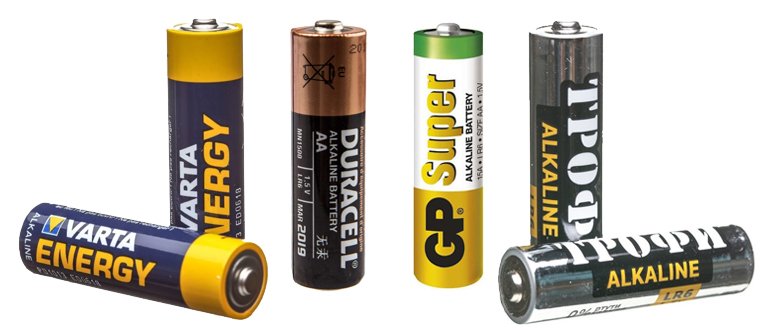


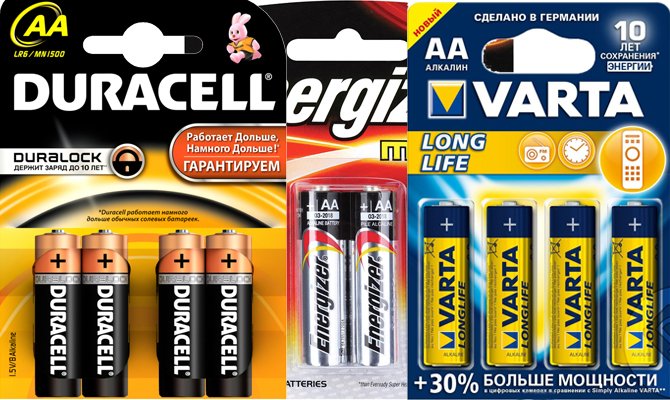
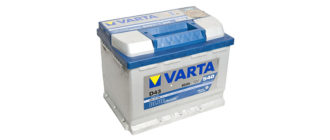
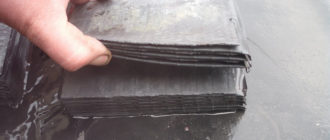


What metal is made of type AA battery case
In most cases, from alkali resistant metals